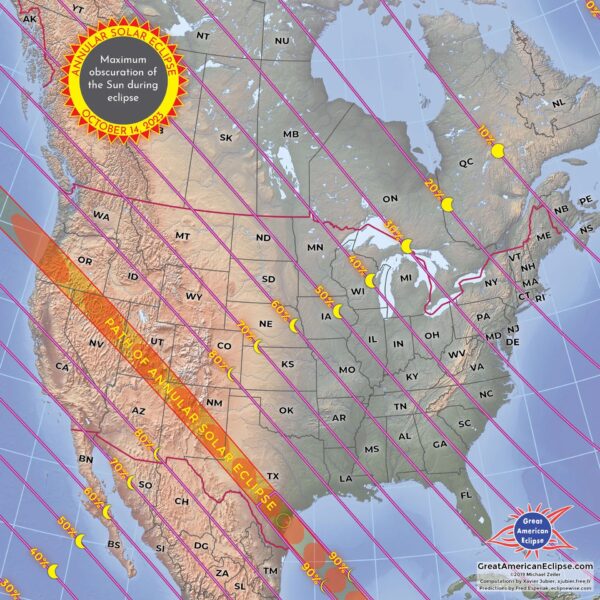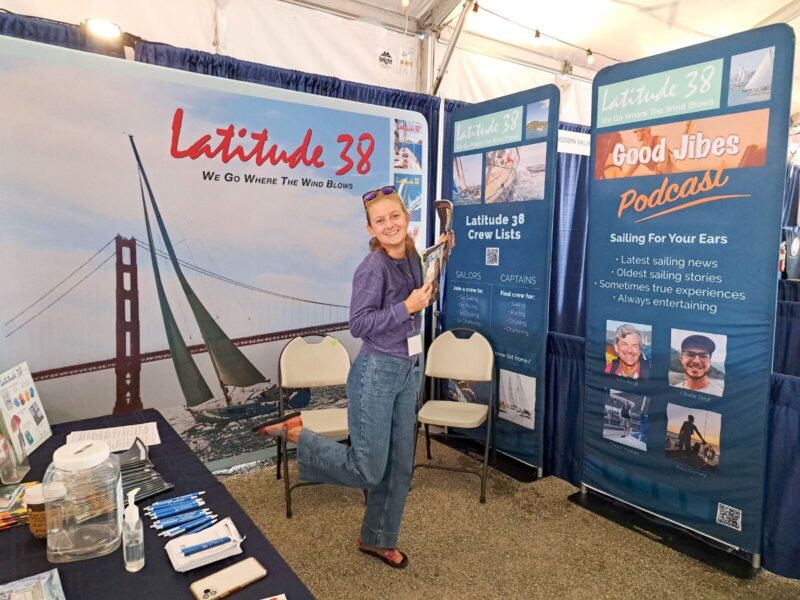
Get Ready for Tomorrow’s Annular Solar Eclipse
If you’re out for an early morning sail on the Bay or a stroll down the docks tomorrow, you may find yourself wondering if your clock was wrong and you got up too early. An annular solar eclipse will be visible from around 8 a.m. with the full “ring of fire” occurring at 9:19 a.m. PDT. NASA describes an annular eclipse as resulting “… when the Moon passes between the Sun and Earth, but when it is at or near its farthest point from Earth. Because the Moon is farther away from Earth, it appears smaller than the Sun and does not completely cover the Sun. As a result, the Moon appears as a dark disk on top of a larger, bright disk, creating what looks like a ring around the Moon.”
The Bay Area will see only a portion of the occultation, with the greater views occurring northward over Oregon as the path of annularity progresses through Nevada, Utah, New Mexico and onward. The eclipse is due for completion over Texas at 12:03 p.m. CDT. According to SFGate, the whole affair will last around three hours, and for optimal viewing of the highlight — the ring of fire, which lasts around five minutes — one needs to be within 125 miles of the path of annularity.

Of course, the local view here in the Bay Area is dependent upon our skies being clear, which may or may not happen. Current weather reports suggest we’ll be starting our day under a cloudy sky, though we’ve all known forecasts to be wrong at times. Either way, the predicted 76.57% percent coverage of the sun will likely be enough to create a midmorning gloaming. A curious moment whenever it occurs. We can only imagine the surprise and fear experienced by those who witnessed eclipses before knowing what they were.
This video produced by Great American Eclipse shows the phenomenon’s path: “This animation simulates the view from a spacecraft chasing the annular solar eclipse from an altitude of 125 miles.”
If you intend to “look” at the eclipse, please be properly prepared. We’ve all been told before, but it’s good to be reminded. NASA writes, “Viewing any part of the bright Sun through a camera lens, binoculars, or a telescope without a special-purpose solar filter secured over the front of the optics will instantly cause severe eye injury.” They’ve got a whole page on Eclipse Safety; it’s worth checking out.
Happy weekend, sailors. And if you’re heading to the Sausalito Boat Show, drop in and say hi.

